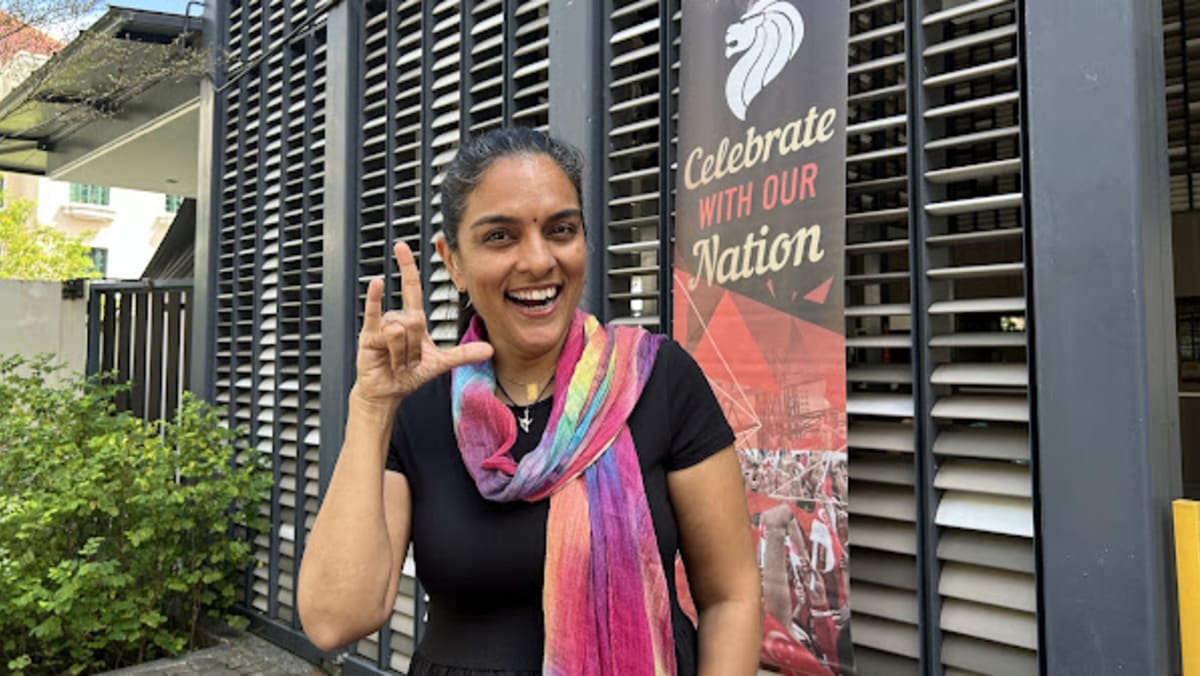Every year, Shalini Gidwani excitedly watches the National Day Parade (NDP) on television. Like most viewers, she loves watching the performances, singing along, and taking in the fireworks.
Because she is deaf, however, she often has to guess what’s happening from what she sees onscreen or rely on the subtitles.
A high fever when she was four years old caused permanent hearing loss. Her main mode of communication is sign language, although she lip-reads and can hear some speech with a hearing aid. She also has a slight speech impediment.
In 2024, after years of watching the parade at home with her family, Gidwani got to be part of it and described her participation as “an experience of a lifetime”.
She was the sign language performer for the pledge and anthem, and also appeared in the picture-in-picture box on the live broadcast of the two segments.
She worked with a sign language interpreter to present the anthem and pledge.
While interpreters focus on conveying the literal meaning of spoken or signed language, performers add artistic expression and emotion through movement and facial expression. Both are essential for a holistic and engaging sign language presentation, Gidwani said.
Her performance was a milestone for her and other deaf people. For years, Gidwani and her family, comprising her deaf husband and two hearing daughters, had longed for sign language interpretation to be included in the parade.
Before 2024, sign language interpreters and performers appeared only briefly in the live NDP broadcasts, usually during the anthem and pledge. Even so, during these segments, the camera would often cut away to other visuals, the 51-year-old told CNA Women.
The live broadcast also did not include picture-in-picture sign language interpretation, except at NDP 2016, where it was used during a song.
Sign language interpretation was also not available on the Padang’s big screens for the live audience.
This year, however, there will be live sign language interpretation on the Padang screens for the first time. It’s a feat that Gidwani helped to achieve, to make it easier for deaf people in the audience to follow along.
“Before last year, it was jarring for deaf people, because one moment, we could understand what’s happening clearly, and then when the interpreters are gone from the television, we’re back to guesswork,” she said.
